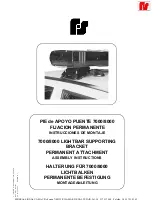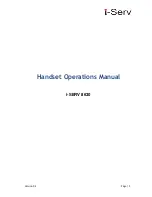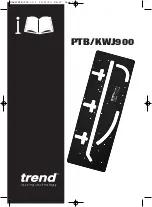
User's Guide HDSPe MADI
© RME
73
30. Technical Background
30.1 MADI Basics
MADI, the serial
M
ultichannel
A
udio
D
igital
I
nterface, has been defined already in 1989 as an
extension of the existing AES3 standard following several manufacturers' wish. The format also
known as AES/EBU, a balanced bi-phase signal, is limited to two channels. Simply put, MADI
contains 28 of those AES/EBU signals in serial, i. e. after one another, and the sample rate can
still even vary by +/-12.5%. The limit which cannot be exceeded is a data rate of 100Mbit/s.
Because an exact sampling frequency is used in most cases, the 64 channel mode was intro-
duced officially in 2001. It allows for a maximum sample rate of 48 kHz + ca. 1%, corresponding
to 32 channels at 96 kHz, without exceeding the maximum data rate of 100 Mbit/s. The effective
data rate of the port is 125 Mbit/s due to additional coding.
Older devices understand and generate only the 56 channel format. Newer devices often work
in the 64 channel format, but offer still no more than 56 audio channels. The rest is being eaten
up by control commands for mixer settings etc. RME's devices of the MADI series show that this
can be done in a much better way, with an invisible transmission of 16 MIDI channels and the
MADI signal still being 100% compatible.
For the transmission of the MADI signal, proved methods known from network technology were
applied. Most people know unbalanced (coaxial) cables with 75 Ohms BNC plugs, they are not
expensive and easy to get. The optical interface is much more interesting due to its complete
galvanic separation, but for many users it is a mystery, because very few have ever dealt with
huge cabinets full of professional network technology. Therefore here are some explanations
regarding 'MADI optical'.
•
The cables used are standard in computer network technology. They are thus not at all
expensive, but unfortunately not available in every computer store.
•
The cables have an internal fibre of only 50 or 62.5 µm diameter and a coating of 125 µm.
They are called network cables 62.5/125 or 50/125, the former mostly being blue and the
latter mostly being orange. Although in many cases not clearly labelled, these are always (!)
glass fibre cables. Plastic fibre cables (POF, plastic optical fibre) can not be manufactured
in such small diameters.
•
The plugs used are also an industry standard and called SC. Please don't mix them up with
ST connectors, which look similar to BNC connectors and are being screwed. Plugs used in
the past (MIC/R) were unnecessarily big and are not being used any longer.
•
The cables are available as a duplex variant (2 cables being glued together) or as a simplex
variant (1 cable). The HDSPe's opto module supports both variants.
•
The transmission uses the multimode technique which supports cable lengths of up to al-
most 2 km. Single mode allows for much longer distances, but it uses a completely different
fibre (8 µm). By the way, due to the wave-length of the light being used (1300 nm) the opti-
cal signal is invisible to the human eye.
Summary of Contents for HDSPe MAD
Page 5: ...User s Guide HDSPe MADI RME 5 User s Guide HDSPe MADI General ...
Page 28: ...28 User s Guide HDSPe MADI RME ...
Page 38: ...38 User s Guide HDSPe MADI RME ...
Page 39: ...User s Guide HDSPe MADI RME 39 User s Guide HDSPe MADI Connections and TotalMix ...
Page 46: ...46 User s Guide HDSPe MADI RME ...
Page 68: ...68 User s Guide HDSPe MADI RME ...
Page 69: ...User s Guide HDSPe MADI RME 69 User s Guide HDSPe MADI Technical Reference ...








































